WHY THE BIG PRICE DIFFERENCE?
What do you actually get when you pay more for fishing gear?
Why is one rod or reel twice as expensive as a very similar-looking model from the same manufacturer? Is it worth paying more? If so, what do you actually get for all your extra dollars? Steve Starling tackles these important questions and more, and finishes up with some priceless advice based on his half a century-plus of experience.
By Steve ‘Starlo’ Starling
In the previous issue of SA Angler I explained my firm belief that fishing tackle buyers have never been better off than they are right now in terms of the “bang” they get for their bucks, especially when buying decent quality budget to mid-priced gear. To illustrate my point, I looked at a couple of very economical light spinning outfits from Shimano and expressed my opinion that —on the basis of what they cost in “real” terms (as in the number of hours worked to earn their purchase price) —we’ve honestly never had it so good. But what about more expensive “premium” tackle? What do you get when you pay twice and even three or four times more for a reel or a rod, and is all that extra outlay honestly worth it?
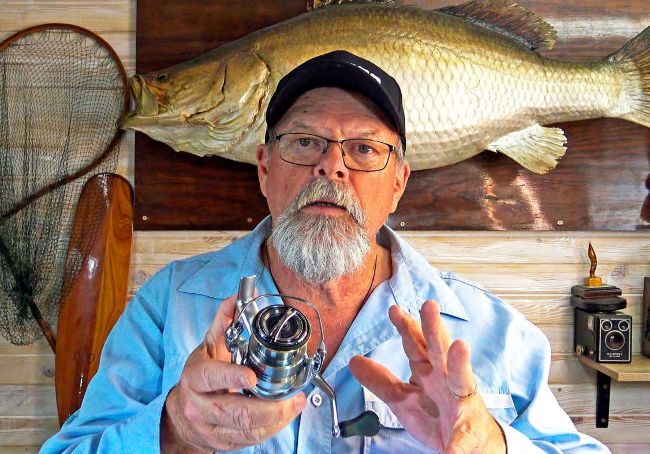
Starlo reckons mid-priced gear is better now than it has ever been.
To begin with, let’s sort out exactly what I mean when I talk about “budget”, “mid-range” and “premium” fishing gear. To my mind, the most economical “budget” gear is represented by an outfit of rod, reel and a fill of line for somewhere in the $120 to $220 range, all-up. Sure, you can buy even cheaper gear than that, but most of it isn’t very good, and it certainly won’t last long. Parents often buy cheaper “kids outfits” for their children at holiday time, only to find that these break or seize after just one or two outings, and end up being discarded in the corner of the garage or shed. This is not only a false economy, but also likely to turn young potential anglers off the sport —possibly forever. I seriously wouldn’t consider spending much less than $120 for a rod, reel and line.
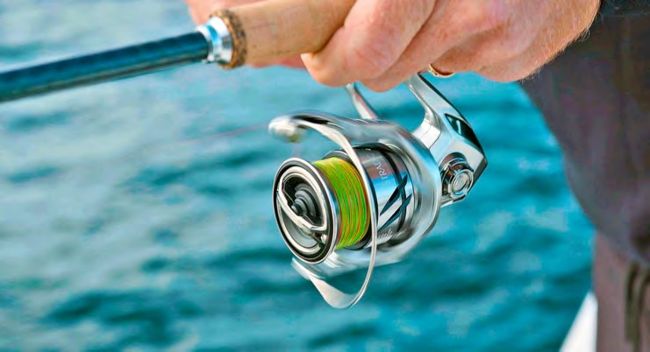
The new Shimano Stradic FM won the best reel award at the 2023 AFTA Tackle Show… it’s not hard to see why
Beyond the $220 to $250 mark we start to move into what I’d call “mid-range” gear —a category that extends right up to those $400 or $450 outfits. Looked after reasonably well, a rod and reel combo in this price bracket should last you for many, many years, and provide excellent service.
From $450 up we’re starting to look at what I’d call “premium” or “top end” gear. It’s possible to pay a thousand dollars and considerably more just for a reel (especially once you move into the lever-drag game fishing category), and equally as much for a rod —even more if you choose to go down the custombuild path… But is it worth it?
WELL, IS IT WORTH IT?
So, what are you getting for all those extra dollars, and is it really worth spending them? It’s a fascinating question, with more than one answer!
Typically, expensive reels have more and better-quality sets of bearings —both ball bearings and roller bearings —more effective seals against water intrusion, and stronger, better-machined or even drop-forged or cold-forged gear trains. They may also feature more metal and less composite or plastic parts, but not always. All of these factors combine to add strength, rigidity, smoothness and (hopefully!) durability to a fishing reel… but they also add cost. Another very important factor that many buyers don’t stop to consider is this: the overall number of expensive reels produced and sold by a company will always be significantly less than their production runs of budget and mid-priced reels.
It’s a simple fact of life (and economics) that far more $100 reels will be made and sold than $1,000 reels. This means that the research, design, set-up and initial tooling costs involved in making the more expensive reels will be “amortised” or written-off over far fewer units.
As an example, let’s say it costs $100,000 to design and tool up for a completely new reel. If the company involved ends up making 100,000 of those reels, the setup costs work out to just a dollar per reel. However, if it only makes 10,000 reels, the set-up costs are $10 per reel… and if it only builds one thousand reels (quite possible with some highly specialised models such as, say, heavy duty saltwater fly reels), then the initial set-up costs work out to $100 per reel! This is obviously a critical component in the final pricing of any form of gear.
WHAT ABOUT RODS?
When it comes to fishing rods, higher costs are directly related to the quality of the materials used to make the blank, the calibre of fixtures and fittings attached to it (especially guides and reel seats), and the labour or machine time involved in putting them all together.
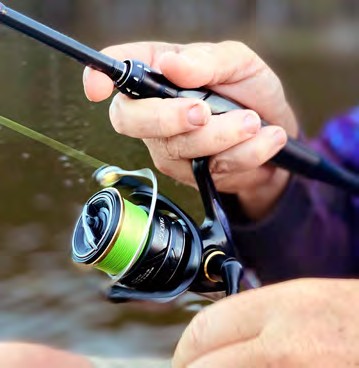
Quality reels function smoothly, lay line perfectly and last for years
There’s a considerable difference between the cost of fiberglass cloth and resins compared to, say, graphite or carbon fibre. There’s also a wide gap in price between cheaper reel seats, runners and tips from lesser-known manufacturers, compared to cutting edge componentry and guides with sophisticated ceramic inserts from a respected and market-leading maker like Fuji.
Interestingly, even seemingly small step-ups in the price of componentry tend to get magnified dramatically as they move along the supply chain. A rod fitted with, say, seven guides that are each only one dollar more expensive than those from another maker don’t just add $7 to the price of the rod we see in the shop. It’s not that simple! That $7 gets marked up by the profit margin, freight costs, taxes, duties and other fees that are added each and every time the rod changes hands: from original manufacturer to wholesaler to importer to retailer and, ultimately, to you. So, a $7 “bump” at the time of manufacture may actually equate to a $20 to $40 (or more!) increase in the final sale price of the rod. See now why companies often appear to nit-pick and seemingly cut corners when choosing fittings or cosmetics for their “cheaper” rods? Little things make a huge difference.
BUT WHAT DOES IT ALL MEAN?
Straight out of the box, a brand new, mid-priced spinning reel feels and behaves very much like a super expensive one. Sure, the pricier one may be a tad lighter and a smidgen quieter when cranked, but those differences will be barely discernible. Both, however, should be smooth and slick, lay line neatly on the spool when it’s retrieved, and perform all their other functions without a hitch or a hiccup. The bail arm must snap shut crisply every time, with minimal effort, and the drag should be as smooth as a baby’s bottom, with low start-up inertia and no obvious lumps and bumps.
Look at those same two reels side-by-side after two or three years of reasonably heavy use, and with minimal maintenance or servicing, and you’ll start to see and feel some differences. The less expensive reel may now be noticeably noisier and feel slightly stiffer, “crunchier” and less smooth to turn, while sometimes its bail arm might not close completely on the first go when tripped. Its drag will probably be rather sticky and lumpy too, compared to the premium model, and the bail roller may well have ceased turning under load. Most of these flaws can be addressed by a thorough servicing, and perhaps the replacement of a few parts (like bail springs, drag washers and that sticky bail roller bearing). But, as the years pass, the performance of these two reels will continue to diverge.
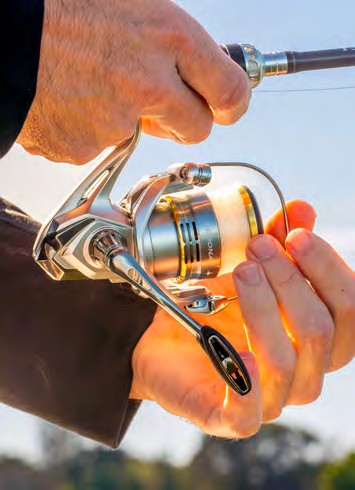
The Shimano Sedona is extremely well priced and offers amazing “bang for your buck”.
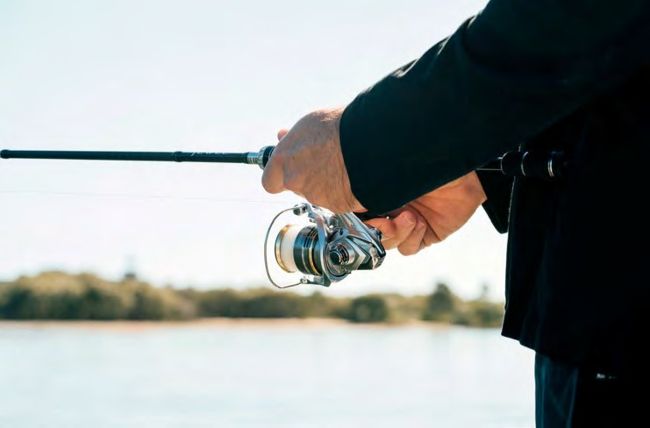
Whether you can justify spending more on your tackle might come down to how much you fish, and how serious you are about it
That, in a nutshell, is what you’re paying for when you spend more on a reel, and whether it’s worth it really comes down to how often and how hard you fish, how well you maintain your gear, and how much the relatively small incremental differences in performance actually mean to you. If they mean a lot, then spend more!
IT’S DIFFERENT WITH RODS
Rods are another story altogether, and a “cheaper” rod feels and performs very differently to a premium stick from day one. This has a lot to do with the so-called “modulus” of different blank materials. More expensive blanks made from pricey materials such as graphite, or glass/graphite blends with a high percentage of graphite, have a higher modulus. What that means in practical terms is simply this: when high modulus blanks are bent and then released, they return to being straight much faster than lower modulus blanks. They also tend not “flog” back and forth while finding their straight, un-bent position. In fishing, this higher modulus or speed of recovery translates to a crisper feel, more accurate casting, better bite detection and faster, more positive hook sets.
Some people love the older, “sloppier” style of low modulus rod and, to be fair, they can be quite handy (and forgiving) in some bait fishing applications. But for lure or squid jig casting, higher modulus definitely offers advantages, in my opinion.
In the shop, so-called “shelf shake” is a reasonable way of getting the feel for a rod: pick it up off the rack and give it a shake and a wobble. Does it quickly return to being straight, or does it flog and flop up and down for a few seconds?
Another interesting way to test the modulus and recovery speed of a rod is to hold it with its tip just a few centimetres clear of a wall, then accelerate the rod rapidly away from that surface. In lower modulus rods, the tip will actually lag backwards and click against the wall before moving forward away from it. Roughly speaking, the closer you can hold the tip to the wall and not make contact with it as you accelerate the rod away, the higher the modulus of the blank.
Of course, there’s no point taking a lovely, crisp, responsive and high modulus blank, then sandbagging it with overly heavy guides and tip. So, more expensive rods tend to utilise premium, lightweight fittings and “minimalist” builds. Look for this, too. If the rod feels soggy and tip-heavy, move on and try another one.
THE BOTTOM LINE
My take-home message on buying fishing gear is actually pretty simple: If you’re on a tight budget (and let’s face it, most of us are these days!) cut corners on your reel purchases, rather than on rods. A low to mid-priced reel from one of the top three or four manufacturers that’s looked after, well-maintained and serviced regularly should offer very good performance for quite a few years, while a cheap, nasty rod will be a dog to use from day one! Think about it…
Until next time, Tight Lines!